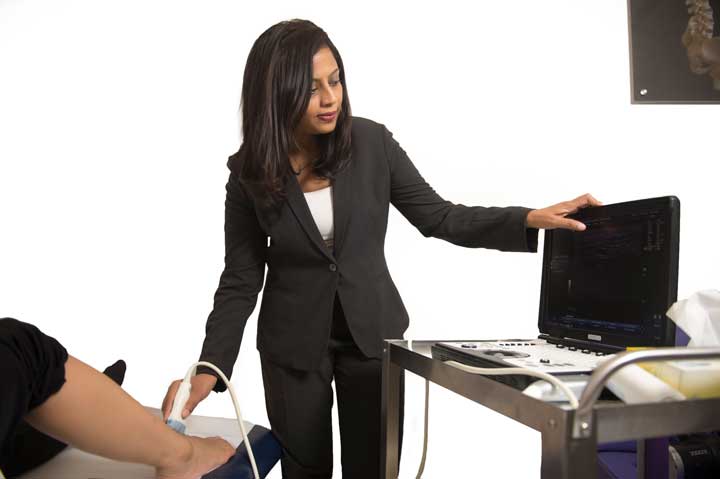
Ultrasound for Arthritis Diagnosis in Dubai, UAE, the uses of ultrasound (US) technology in rheumatology have been growing in importance over the last few years. With this technology, physicians can now “see” inside the joint in real time and find indications of active inflammation or fluid-indicators that are often hard to find by palpation or visual assessment alone. There are also dynamic applications that allow physicians to assess a joint during movement. This is not possible using static modalities such as magnetic resonance imaging or computed tomography scans.
For decades, X-ray images have been used to help detect rheumatoid arthritis (RA) and to monitor for the progression of bone damage. In early rheumatoid arthritis, however, X-rays may appear normal although the disease is active – making the films useful as a baseline but not much help in getting a timely diagnosis and treatment. Modern imaging techniques, including ultrasound and magnetic resonance imaging (MRI), can reveal early, non-bony signs of RA that are invisible on X-ray.
“Both MRI and ultrasound are more sensitive at detecting bone erosion than X-ray. In addition, they also reveal inflammation, which we could not see directly before and had to rely on blood tests and using our fingers to feel the joints,”
says rheumatologist Philip Conaghan, MD, PhD, professor of musculoskeletal medicine at the University of Leeds and president of the International Society for Musculoskeletal Imaging in Rheumatology.
That capability has become increasingly important with the development of ways to slow the RA disease process, before serious bone and joint damage occurs, using disease-modifying antirheumatic drugs (DMARDs), including biologics.
Ultrasound in Arthritis Treatment in Dubai, UAE
Both ultrasound and MRI can detect synovitis, inflammation of the lining of the joints, and tendon abnormalities. In addition, MRI detects areas of increased fluid (edema) in bone marrow that is a predictor for the development of bony erosions.
While musculoskeletal MRI is quite expensive and requires an experienced radiologist to read, rheumatologists often have access to power Doppler ultrasound in their offices – used most frequently to guide joint aspirations and injections. Many rheumatologists are able to add ultrasound to their physical exam, but quantifiable measures of what distinguishes RA from normal on ultrasound (or how many joints need to be examined) have been lacking.
In research presented at the American College of Rheumatology (ACR) annual meeting in November 2012, researchers from Brazil looked at how ultrasound measurements were taken in small, medium, and large joints could help physicians diagnose RA. For most joints, they were able to quantify a level of change that clearly distinguished RA patients from controls. Wrist measurements were the most valuable, with hip measurements the least help.
“Ultrasound is a very important imaging tool for RA because it is readily available in the office and you can scan many joints,”
says lead researcher Flàvia Machado, MD, of the Universidade Federal of São Paulo.
However valuable, Machado cautions that ultrasound is not a solo diagnostic test for rheumatoid arthritis.
“You can see the same bone erosion and synovial lining changes in other rheumatic diseases, such as lupus and psoriatic arthritis (and also in asymptomatic volunteers), so the clinical history and physical examination is still important, with careful evaluation of the pattern of joint involvement and some blood tests to make the diagnosis,”
says Dr. Machado.
In recent years, there has been increasing emphasis on using objective scores to monitor disease activity and decide when and if you need a change in treatment to bring RA under control. Although not always needed, ultrasound and MRI can help with those decisions.